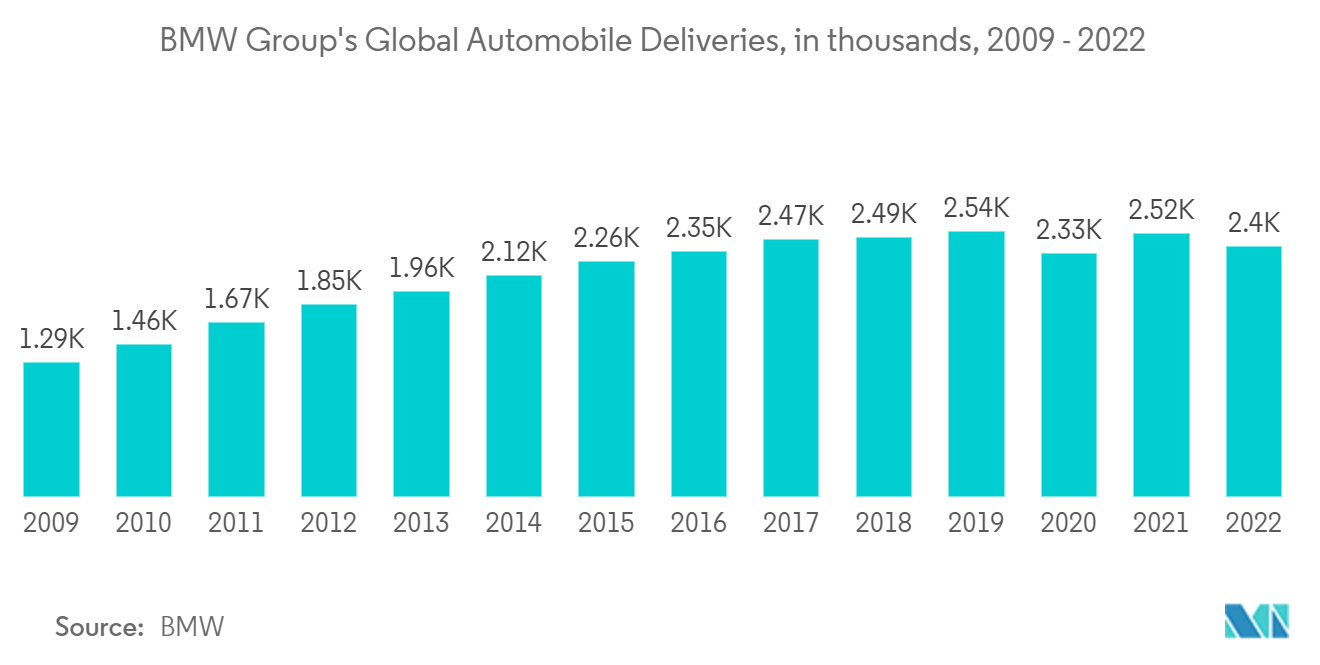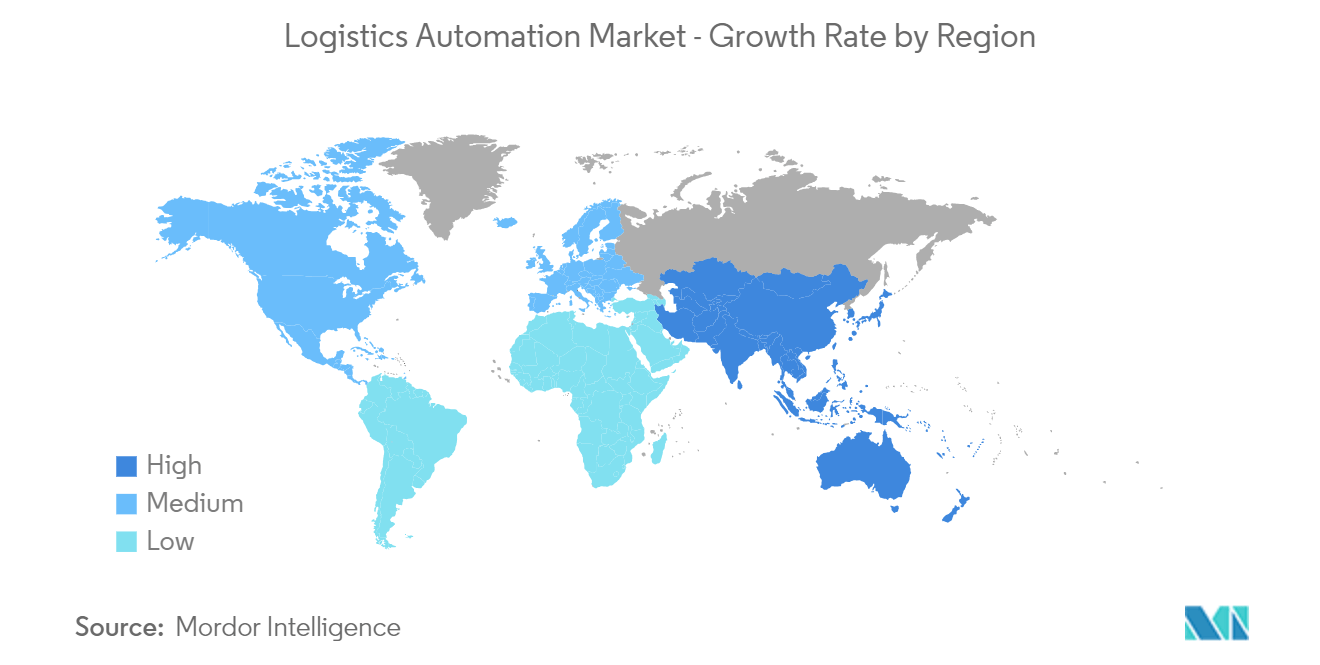Market Trends of Logistics Automation Industry
Mobile Robots (AGV and AMR) are Expected to Witness Significant Growth
- The main usage of logistics robots is in the form of automated guided vehicles (AGVs) in warehouses and storage facilities for transporting goods. These robots operate in predefined pathways by moving products for shipping and storage. AGVs play a vital role in reducing the cost of logistics as well as streamlining the supply chain.
- AGVs are also used for replenishment and picking for inbound and outbound handling. For example, AGVs transport inventory from receiving to storage locations or long-term storage locations to forward-picking locations to replenish stock. Moving inventory from long-term storage to forward-picking locations ensures adequate inventory is accessible to pickers, making the order-picking process more efficient.
- The vendors in the studied market are constantly innovating and launching new AGVs and AMRs for the warehouse segment of operations, including logistics. For instance, in April 2021, JBT unveiled its warehouse freezer AGV, which may operate at various temperatures, from -10 oF to 110 oF, offering operations a lift capacity of 2,500 pounds. The automatic guided vehicle (AGV) features a triple-stage hydraulic mast with an integrated side shift and tilt. In addition, it provides a variety of lift heights, from 357 inches (or less) to the top of its forks to 422 inches.
- Further, the automakers are increasing their production and shipment units, indicating the usage of AGVs and AMRs. For instance, according to BMW, in 2022, the Bayerische Motoren Werke AG (BMW) shipped over 2.5 million autos worldwide, including brands BMW, MINI, and Rolls-Royce vehicles, to customers, a year in which all industries faced headwinds from supply bottlenecks, China's pandemic lockdowns, and others.
- In March 2022, autonomous mobile robot (AMR) provider Locus Robotics extended its line of warehouse AMRs with the Locus Vector and Locus Max. Locus Vector is a compact AMR with omnidirectional mobility and robust payload capacity. The Locus Max AMR has a heavyweight load capacity and improved flexibility for material handling applications. The LocusBots can be added to existing as well as new workflows, enabling operations to scale and adapt to changing market demands.

Asia-Pacific is Expected to Register the Largest Market
- The Asia-Pacific warehouse automation market is rapidly expanding due to the region's growing number of industries and their integration with automation to increase ROI. With the increasing adoption of robots, the expansion of e-commerce, and the construction of new warehouses, the Asia-Pacific warehouse automation market is expected to dominate.
- China, one of the largest economies in the world, is one of the significant suppliers of warehouse robots in the Asia-Pacific region, particularly in the automotive, manufacturing, and e-commerce sectors. The market is growing as a result of this. China achieved a robot density of 322 units per 10,000 workers in the manufacturing industry, as per the most recent statistical yearbook, "World Robotics," by IFR, and the nation was ranked 5th globally in 2021.
- In Japan, the "New Robot Strategy" aims to establish the country as the leading hub for robotic innovation. The Japanese government already contributed more than USD 930.5 million in 2022 (according to IFR). The manufacturing and service action plan includes initiatives like autonomous driving, advanced air mobility, and the creation of integrated technologies that are anticipated to form the basis of the next generation of robots and artificial intelligence. Additionally, according to IFR, a budget of USD 440 million was given to robotics-related projects in the "Moonshot Research and Development Program" for five years from 2020 to 2025.
- The robust e-commerce sector in India is also significantly boosting the market's growth. According to IBEF, India's e-commerce market is expected to reach USD 111 billion by 2024 and USD 200 billion by 2026. After China and the United States, India had the third-largest online shopper base of 140 million in 2020. An increase in smartphone and internet usage is a major factor in the industry's growth. The Digital India program significantly increased the number of internet connections in 2021, reaching 830 million. Several government policies helped accelerate this growth. The Indian Government allowed 100% FDI (foreign direct investment) in B2B e-commerce. Moreover, 100% FDI is permitted under the automatic route in the marketplace model of e-commerce.
- For instance, e-commerce giant Amazon, which invested USD 5 billion in the Indian market, is investing in automated warehouses across India. Amazon is among the first few companies in India that have experimented with and adopted robotics in their warehouses. Its Kiva robot engages in the picking and packing process at large warehouses. Further, in June 2022, Amazon announced its first autonomous mobile robot aimed at reducing warehouse workers' workload. The autonomous robot named Porteus moves through the Amazon facilities using advanced safety, perception, and navigation technology developed by Amazon. Furthermore, with the growing investment in the FMCG sector in India, the demand for the warehouse automation market is increasing.


